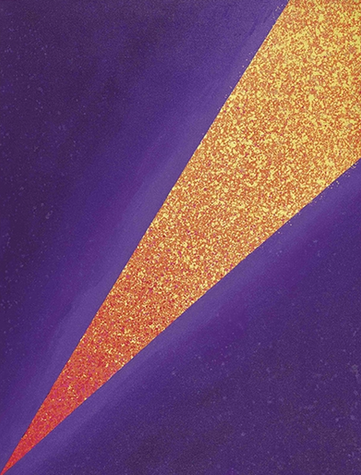Punto—an Italian word meaning "point"—symbolizes both the beginning and the end. It represents seriousness, simplicity, affirmation, permanence, and constructiveness, serving as a foundation. After World War II, European Art Informel and American Action Painting flourished, but by the 1960s, they had lost their originality and vitality. These two major movements emphasized the act of creation and the expression of emotion within artworks.。

However, Hsiao Chin believed that visual art should emphasize deep contemplation and observation; otherwise, art would lack lasting social value.
Coincidentally, Hsiao Chin’s friend, the Italian artist Antonio Calderara, who was 30 years his senior, also recognized the extreme arbitrariness of Art Informel. As a result, in August 1961, they decided to establish the Punto International Art Movement in Milan.

The Punto International Art Movement once published a concise manifesto:
"To understand the scope of the 'finite' within the 'infinite,' to grasp the reality of 'existence' and 'contemplation,' and to uphold the purity of the 'reason for creation.'"
Hsiao Chin explained that humans exist within the finite conditions of an infinite universe, and that artists should be the spiritual prophets and intellectual representatives of humanity.

The Punto Art Movement absolutely opposed the following five artistic tendencies:
Academicism
Neo-Dadaism
Art Informel
Mechanized works
All forms of experimental art

Between 1962 and 1966, the movement held exhibitions across Italy, Spain, Switzerland, and Taiwan. The final Punto exhibition took place in 1966, marking the end of the movement as Hsiao Chin relocated to New York for further artistic development. However, the spirit of Punto had already been deeply integrated into his works of the 1960s.

[文字節取自/國立台灣美術館]
.png)














